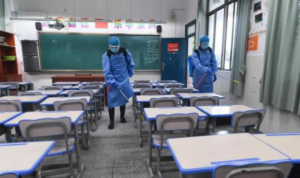
Shanghai New Crown Research: Changes in the sense of taste and smell are likely to be important signs of viral invasion of the nervous system
On February 2, the reporter learned from the Fourth People’s Hospital of Shanghai, affiliated with Tongji University (Shanghai IV Hospital) that on January 16, the medical team of Xiong Lize and Li Cheng from the Department of Anesthesia and Perioperative Medicine of the hospital published the latest results of a new tube study in the internationally renowned journal International Journal of Infectious Diseases. The clinical study found that during the epidemic period of the Omicron strain, the prevalence of gustatory and olfactory changes did not decrease significantly, but the severity was reduced and vaccination played a protective role. The findings suggest that changes in taste and smell are likely to be important markers of viral invasion of the nervous system. The team’s series of research results provide a theoretical basis for the treatment of neo-crown, as well as new insights into the pathogenesis of critically ill neo-crown.
Currently, the SARS-CoV-2 Omicron strain remains the dominant variant of the global pandemic. Since the Neocon pandemic, taste and smell impairment has been shown to be a major symptom of Neocon infection. Previous studies have shown that the prevalence of olfactory dysfunction associated with Neocoron ranges from 3.2% to 98.3% and the prevalence of gustatory dysfunction ranges from 5.6% to 62.7%, but the prevalence of gustatory dysfunction and its risk factors during the Omicron strain epidemic are unknown.
To this end, the medical team of Lizze Xiong and Cheng Li of Shanghai IV Hospital conducted an observational study of SARS-CoV-2 Omicron strain-infected patients admitted to three square-cabin hospitals between May 17 and June 16, 2022, and evaluated olfactory and gustatory functions using the Gustatory Olfactory Questionnaire and the Digital Visual Analog Scale at two time points, respectively. Six hundred and eighty-eight and 385 subjects completed the two time-point assessments, respectively.
The results showed that the prevalence of taste and smell changes at the two time points was 41.3% and 42.6%, respectively. In addition, there was no difference in the distribution of severity between the two groups, whether assessed by the Taste and Smell Questionnaire or the Olfactory and Taste Visual Analog Scale.
Patients whose first symptoms were headache and muscle pain were more likely to have taste and smell changes, while patients whose first symptoms were cough, throat discomfort and fever, as well as those who received three doses of vaccine and were not yet symptomatic showed a protective effect, with statistically significant results. In the study, Jian Song and Qi Jing of Shanghai IV Hospital and Enzhao Zhu of Tongji University were co-first authors, and Yingna Tao, Cheng Li and Lize Xiong of the same hospital were co-corresponding authors.


Average Rating